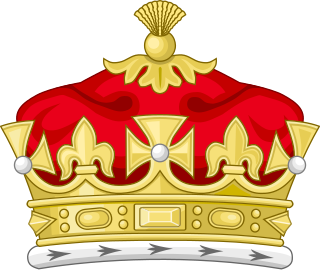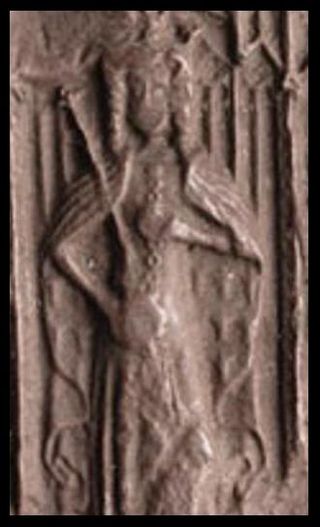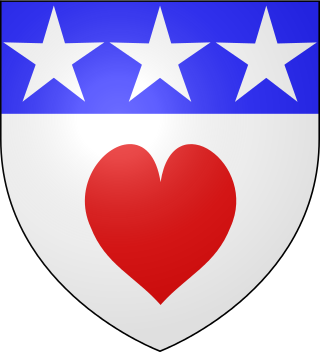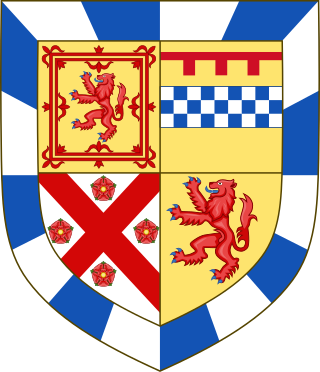| | | | | | | | Earl of Angus (Stewart line), 1329 |
|
| | | | | | | | John Stewart
(d. 1331)
1st Earl of Angus, Lord of Bonkyl, Lord of Abernethy jure uxoris | | William the Hardy
(1243–1298)
Lord of Douglas |
|
| | | | | | | | | | | | | | | | | | | | | |
| | | | |
| | | | | | | | Thomas Stewart
(b. before 1331-1361)
2nd Earl of Angus | | Archibald Douglas
(d. 1333) | | James Douglas "the Good"
(c. 1286–1330)
Lord of Douglas |
|
| | | | | | | | | | | | | | | | | | | | | |
|
| | | | | | | | | | | | | Earl of Douglas, 1358 | | | | | |
|
Robert III of Scotland
(c. 1337–1406) | | | | | | Margaret Stewart
(d. 1417)
3rd Countess of Angus, Lady of Abernethy, Lady of Bonkyll | | William Douglas
(c. 1323–1384)
1st Earl of Douglas | | Archibald Douglas "the Grim"
(c. 1330 – c. 1400)
3rd Earl of Douglas, Earl of Wigtown, Lord of Galloway, Lord of Douglas, Lord of Bothwell |
| |
| | | | | | | | | | | | | | | | | | | | | | | | | | | | |
| | | | | | | | | | |
| | | | | | | | | | Earl of Angus transferred from the Stewarts to the Douglasses when Margaret resigned her title in deference to her son, 1389 | | | | | | | | | | | | Earl of Avondale and Lord Balveny, 1437 |
| | | | |
James I
(1394–1437) | | Princess Mary of Scotland | | George Douglas
(1380–1430)
1st Earl of Angus, Lord of Abernethy, Lord of Bonkyll | | James Douglas
(c. 1358–1388)
2nd Earl of Douglas, Earl of Mar | | Archibald Douglas "Tyneman"
(c. 1369–1424)
Duke of Touraine, 4th Earl of Douglas, Earl of Wigtown, 13th Lord of Douglas, Lord of Galloway, Lord of Douglas, Lord of Bothwell
m. Margaret of Carrick, daughter of Robert III | | James Douglas
(1371–1443)
7th Earl of Douglas, 1st Earl of Avondale, 1st Lord Balveny |
| |
| | | | | | | | | | | | | | | | | | | | | | | | | | | | |
| | |
| | | | | | | | | William Douglas
(1398–1437)
2nd Earl of Angus | | Douglases of Drumlanrig | | Archibald Douglas
(c. 1391–1439)
Duke of Touraine, 5th Earl of Douglas, Earl of Wigtown, Lord of Galloway, Lord of Douglas, Lord of Bothwell, Lord of Selkirk and Ettrick Forest, Eskdale, Lauderdale, Liddesdale and Annandale, Count of Longueville, Seigneur de Dun-le-roi | | | | | | | | | | | | | | |
| | | | | | | | | |
| | | | | | | | | | | | | | | | | | | | | | | | | | | | | | | | | | Earl of Ormond (Scotland) (1st creation), 1445 |
| | | | |
James II
(1430–1460) | | | | | | James Douglas
(1428–1446)
3rd Earl of Angus | | George Douglas
(c. 1427–1463)
4th Earl of Angus | | William Douglas
(c. 1424–1440)
Duke of Touraine, 6th Earl of Douglas, Earl of Wigtown, Lord of Galloway, Lord of Bothwell, Lord of Selkirk and Ettrick Forest, Eskdale, Lauderdale, and Annandale, Count of Longueville, Seigneur de Dun-le-roi | | William Douglas
(1425–1452)
8th Earl of Douglas, 2nd Earl of Avondale, 2nd Lord Balveny | | James Douglas
(1426–1491)
9th Earl of Douglas, 3rd Earl of Avondale, 3rd Lord Balveny | | Hugh Douglas
(d. 1455)
Earl of Ormond |
|
| | | | | | | | | | | | | | | | | | | | | | | | | | Earldom of Douglas and Earldom of Avondale forfeit, 1491 | | Eardom of Ormand forfeit, 1455 |
|
James III
(1451/1452–1448) | | | | | | | | | | Archibald Douglas
(c. 1449–1513)
5th Earl of Angus |
|
| | | | | | | | | | | | | | | | | | | | | | |
| | | | | | | | | | | | | |
| | | | | | | | | Marquess of Ormond (Scotland) (1st creation), 1476
Earl of Ross, 1481
Duke of Ross, 1488 | | | | | | | | | | |
|
James IV
(1473–1513) | | | | | | James Stewart
(1476–1504)
Duke of Ross, Marquess of Ormond, Earl of Ross | | George Douglas
(1469–1513)
styled Master of Angus | | William Douglas of Glenbervie
(1473–1513) |
|
| | | | | | | | | | Dukedom of Ross (1488 creation), Marqessate of Ormond (1st creation) and Earldom of Ross (1481 creation) extinct, 1504 | | | | | | | | | | |
| | | | |
| | | | | Duke of Ross (2nd creation), 1514 | | | | | | | | | | | | | | | |
| | | | | |
James V
(1512–1542) | | Alexander Stewart
(1514–1515)
Duke of Ross | | Archibald Douglas
(1490–1557)
6th Earl of Angus | | George Douglas of Pittendreich
(d. 1552) | | Archibald Douglas of Glenbervie
(1513–1570) |
|
| | | | | Dukedom of Ross (2nd creation) extinct, 1515 | | | | | | | | | | | | | | |
|
| | | | | Earl of Ross (1565 creation) | | | | | | | | | | | | | | |
|
Mary, Queen of Scots
(1542–1587) | | Henry Stuart
(1546–1567)
Duke of Albany, 1st Earl of Ross, Lord Darnley, Lord Ardmannoch | | | | | | David Douglas
(c. 1515–1558)
7th Earl of Angus | | William Douglas
(1533–1591)
9th Earl of Angus |
| |
| | | | | | | | | | | | | | | | | | | | | | |
| | | |
James VI and I
(1566–1625)
2nd Earl of Ross | | | | | | | | | | Archibald Douglas
(1555–1588)
8th Earl of Angus, Earl of Morton | | William Douglas
(1553–1611)
10th Earl of Angus |
|
| Earldom of Ross (1565 creation), merged with the crown | | | | | | | | | | | | | | | | | |
|
| | | | | | | | | | | | | | | | | | | | | |
| | | | |
| | | | | Marquess of Ormond (Scotland) (2nd creation), Earl of Ross, and Lord Ardmannoch, 1600 | | | | | | | | | | Marquess of Douglas (1st creation), 1633 |
|
Elizabeth Stuart
(1596–1662) | | Charles Stuart
(1600–1649)
Marquess of Ormond, Earl of Ross
Later King Charles I of England and Scotland | | | | | | | | | | William Douglas
(1589–1660)
1st Marquess of Douglas, 11th Earl of Angus |
|
| | | | | Marquessate of Ormand (2nd creation) and Earldom of Ross (1600 creation) merged with the Crown, 1625 | | | | | | | | | | | | | |
|
| | | | | | | | | | | | | | | | | Earl of Ormond (Scotland) (2nd creation), 1651 |
|
Sophia of Hanover
(1630–1714) | | | | | | | | | | | | | | Archibald Douglas
(1609–1655)
1st Earl of Ormond |
|
| | | | | | | | | | | | | | | | | | | | | | | | | |
| | | | |
| | | | | | | | | | | | | | | | | | | | | | Earl of Forfar (1st creation), 1661 |
|
King George I
(1660–1727) | | | | | | | | | | | | | | James Douglas
(c. 1646–1700)
2nd Marquess of Douglas, 12th Earl of Angus | | Archibald Douglas
(1653–1712)
2nd Earl of Ormond, 1st Earl of Forfar |
|
| | | | | | | | | | | | | | | | | | | | | | | | | |
|
| | | | | | | | | | | | | | | | | Duke of Douglas, Marquess of Angus and Abernethy, Viscount of Jedburgh Forest, Lord Douglas of Bonkill, Prestoun, and Robertoun, 1703 | | | | | |
|
King George II
(1683–1760) | | | | | | | | | | | | | | Archibald Douglas
(1694–1761)
1st Duke of Douglas, Marquess of Angus and Abernethy, and Viscount of Jedburgh Forest, Lord Douglas of Bonkill, Prestoun, and Robertoun,
3rd Marquess of Douglas, 13th Earl of Angus | | Archibald Douglas
(1692–1715)
3rd Earl of Ormond, 2nd Earl of Forfar |
|
| | | | | | | | | | | | | | | | | Dukedom of Douglas, Marquessate of Angus and Abernethy, and Viscountcy of Jedburgh Forest, Lordship Douglas of Bonkill, Prestoun, and Robertoun extinct, 1761
Marquessate of Douglas, and earldom of Angus passed to James Hamilton, 7th Duke of Hamilton | | Earldoms of Ormond and Forfar extinct, 1715 |
|
Frederick
(1707–1751)
Prince of Wales |
|
| | |
|
King George III
(1683–1760) |
|
| | | | | | | | |
| | | | |
| | | | Edward Augustus
(1767–1820)
Duke of Kent and Strathearn |
|
| | | | | | |
|
| | | | Queen Victoria
(1819–1901) |
|
| | | | | | |
|
| | | | King Edward VII
(1841–1910) |
|
| | | | | | | | | | | | |
| | | | |
| | | | Duke of Clarence and Avondale and Earl of Athlone, 1890 | | | | | |
|
| | | | Prince Albert Victor
(1864–1892)
Duke of Clarence and Avondale, Earl of Athlone | | King George V
(1865–1936) |
|
| | | | Dukedom of Clarence and Avondale and Earldom of Athlone extinct, 1892 | | | | | |
|
| | | | | | | | King George VI
(1895–1952) |
|
| | | | | | | | | | |
|
| | | | | | | | Queen Elizabeth II
(1926–2022) | | | | |
|
| | | | | | | | | | | |
|
| | | | | | | | Earl of Forfar (2nd creation), 2019 |
|
| | | | | | | | Prince Edward
(b. 1964)
Duke of Edinburgh, Earl of Forfar | |
|
















